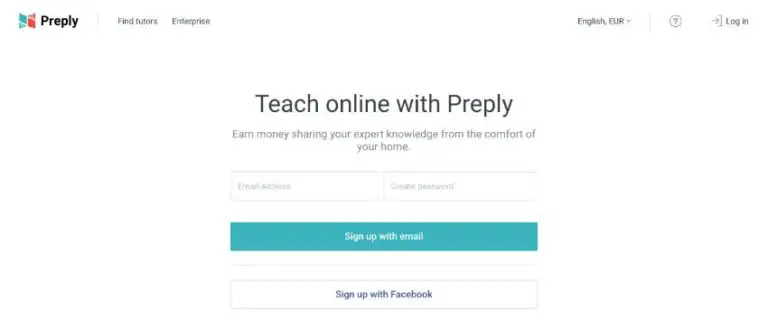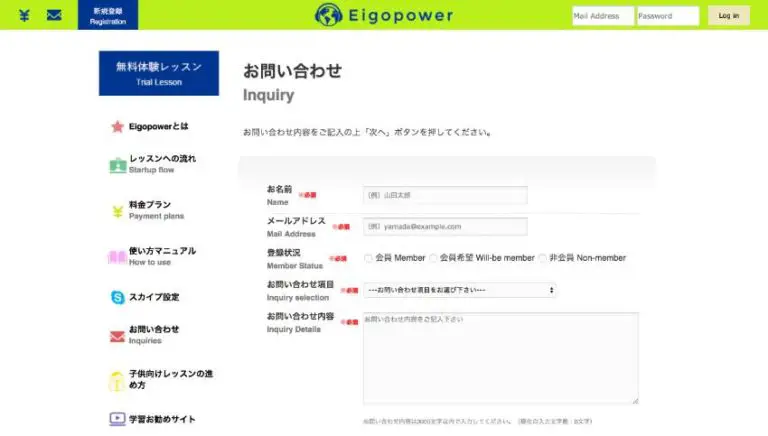Do you want to teach English online to Japanese students from home?
Maybe you’re interested in the culture, the people or you’re learning the language and want the chance to use it in class.
But where do you find them online? And once you get a trial lesson, what do you teach them?
Join our mailing list to receive a free ESL teaching resource every week.
This article gives you all you need to know about finding your new Japanese students, considering their needs when planning lessons and some of the cultural differences you may need to deal with.
Let’s go!

The Best Online-Platforms to Teach English to Japanese Students
You will likely meet Japanese students on the same platforms you teach many of your other students.
These are online marketplaces, where you can create a teacher profile and students can book a lesson with you. Basically, you are free to set your own hours and rates.
For every book lesson, the platforms take a cut of your rates.
The three most popular online teaching platforms, and some of their pro and cons, are:
Verbling

On Verbling, teachers retain a higher percentage of lesson payment but there are fewer students available than other options.
They also include any required teaching tools such as video call, whiteboard etc on the website which makes things easy.
Apply to teach with Verbling here.
Preply

On Preply, teachers retain a lower percentage of lesson payment in the beginning and only get paid better after a few hundred lessons or so.
The advantage is that it has more students and has started to include lesson materials, meaning less work creating lesson plans.
Once you are matched with a student you can use Skype to conduct your lessons.
Apply to teach with Preply here.
Italki

Italki is harder for a teacher to join so may not be available at the start of a career.
The advantage is that it seems to be more popular for students so you can possibly find more work.
Similar to Preply, you will need to use external software such as Skype to teach your classes.
Apply to teach with Italki here.
Platforms That Specialise in Teaching Japanese-only Students
As well as these, there are dedicated companies that specialise in teaching Japanese-only students.
Bear in mind that these websites are aimed at Japanese natives. As such, the websites will usually be in Japanese.
Some offer an English language option but for others, you will need to know the language to a certain degree (or be happy using a translator!)
How to Navigate a Site Without Knowing Japanese
If you don’t know Japanese then there are two ways to make a website decipherable.
Change the Website Language
- Look for a box that says “日本語”. This means “Japanese” and is where we will change the language.
- After clicking on this box, search for “英語”. This means “English” and after selecting this option you should get the website in English (if this is an option they offer).
Use Google Translate
- Search for the website in Google
- Look for the option next to the website that says translate.
- After selecting this, google will take you to its own translation of the website. It won’t be perfect but it will be good enough to make your way around.
Ok, so now we know we know how to read the websites, let’s compare them:
Eigox
| Overview: Eigox | |
| Students | Mostly adults |
| Teacher Requirements | Native Speaker |
| Pay per hour | ~$13 |
| Schedule | 10 hours per week preferred |
| Application Link | https://www.eigox.jp/recruitment/tutor |

I have experience teaching on Eigox and it has its ups and downs.
The positives are that the lessons are fairly relaxed, most of the time it is a free conversation and when it isn’t you are provided with a lesson plan and all of the materials.
The pay is fairly decent (around $13 an hour) and you are free to set your own hours.
The negatives are that there isn’t a massive amount of work, there is no way to synchronise the calendar with anything else so you have to update your hours each week if you take lessons elsewhere.
They also have a cancellation policy where if you have to cancel a lesson then you not only forfeit payment for the class and are put on the watch (fair) but you also have to pay the cost of the class!
I had this happen once after a double booking occurred (I hadn’t updated my schedule on Eigox). I had to cancel the class and when I found that I would have to pay out from my next paycheque I decided that it wasn’t for me.
Eigopower
| Overview: Eigopower | |
| Students | Mostly children |
| Teacher Requirements | Native Speaker, 1 year of experience |
| Pay per hour | ~$5-12 |
| Schedule | – |
| Application Link | https://www.eigopower.net/WTE/site.cgi?m=inqfrmshw |

Eigopower offers between $5 and $12 an hour.
Not the worst available but certainly not the best. The website also isn’t one of the most professional, there are more than a few spelling mistakes to be found.
That being said, the entry requirements are fairly low (preferring one year of teaching experience) and their emphasis seems to be on teaching children so another bonus if you are wanting to specialise in that area.
I would say that you don’t want to stay on this platform forever but it looks like an accessible job if you are just starting out.
Ecom
| Overview: Ecom | |
| Students | Highly motivated children and adults |
| Teacher Requirements | 2 years of experience + business experience |
| Pay per hour | ~$16-20 |
| Schedule | ~20 hours per week |
| Application Link | http://www.myecom.net/teachers/ |

Ecom looks to be one of the more higher-end companies.
Their focus is on quality over quantity and as such require more experience (2 years) but for higher pay ($16-20 an hour).
Their focus is on business English as well as exam preparation for IELTS, TOEFL etc. Most of their students are businessmen.
One of the disadvantages (at least for myself) is that they are looking for people who can commit to 20 hours a week.
This is great if you are looking for a sole “employer”. However, for those that have other students and are looking to supplement with a few extra hours, this may not be ideal.
Another drawback is that they seem to be a lot more popular amongst teachers than the others. A great sign that they are a quality platform but it means the likelihood of getting a spot is reduced.
Go after this one if you have a bit of experience but getting in may prove a challenge!
What Are the Logistics for Teaching English Online?
There are a few things that you will need to bear in mind when working with Japanese students (and companies).
Technology and Workplace
The first thing if you haven’t got set up already is the hardware. You will need a computer connected to a decent speed internet connection. The internet speed doesn’t need to be the fastest but it does need to be stable.
You will also need a headset and webcam (if one isn’t already built into the computer). These can be picked up fairly inexpensively.
Once you have these then download your chosen video call software (I recommend Skype). This will allow you to, first of all, attend the interviews for the companies you want to work for as well as to conduct the lessons themselves.
When you attend the interview make sure you are presentable. Have a plain or tidy background, with good lighting and make sure to smile!
Time Difference
Some of your students will be Japanese natives living and possibly working abroad. In these situations, you may work with a few that match your time zone but the vast majority of Japanese people live… well in Japan.
Depending on where you live, this could be a small time difference or like me (UK) there could be a large time difference.
It actually works as an advantage for me as I work mornings and afternoons which is ideal for Japanese students who want to do lessons in the evening (after work).
Wherever you are, you need to factor this in when choosing your work schedule.
Payment
If you work on a website that caters to students from all countries then you don’t need to worry too much as you’ll likely be paid in a familiar currency such as dollars via PayPal.
If you work for a Japanese company though you are likely to be paid in Japanese Yen.
This was the case when I worked for Eigox. It was still via PayPal which made things a little easier but be aware of current currency rates and if any charges apply when looking at the remuneration of a teaching position.
Communication
Skype is widely common in Japan and I have used this for contact with most of my Japanese students as well as companies.
Read our beginner guide on teaching English online with Skype.
Don’t worry if you can’t type Japanese as plenty of people use rōmaji (Latin script) to spell their name on skype.
Special Characteristics of Japanese Students
You will find some similarities in the manner of personality between your Japanese students. This is something that you will get a feel for as you gain more experience.
However, just like any other student, Japanese students come in all shapes and sizes so don’t go into a first lesson assuming you know exactly how they will be.
Adults
In my experience, adults are usually very polite, punctual and attentive. Most of my adult Japanese students are learning for business reasons and so being generally knowledgeable in this area will be greatly appreciated.
Teens
Teenagers will usually be quite polite and like teens from other countries you can still win them over by connecting with them on their interests. Also, remember not to patronise and you should have no problems.
Children
I have found that teaching Japanese children is a lot more similar to teaching any other child online. They may be a little more polite and respectful but you have to remember that they are still children and you will still need to “win” their attention.
What Japanese Students Are Expecting of You
Like with any other student, punctuality and professionalism are expected from you.
With some adults, you can spend more time building rapport and be a bit freer with the activities in the lesson whereas others prefer to “get down to business” and be doing exercises and drills rather than talk about what they had for dinner yesterday.
Like most other children, Japanese children don’t really have expectations of how you should be. If you manage to make the lesson fun and keep the momentum going (and the parents see they are making progress) then you’ll do just fine.
There is a cliche that teachers in Japan dictate the class without a great deal of opportunity for freethinking from the class.
While this can be true for some, Japanese students know that you are a foreigner and appreciate being able to learn in a more relaxed atmosphere with free conversation and learn about your culture.
That being said, I have found it takes a few lessons for them to warm up to you and open up so just try to relax and give it time.
Cultural Differences Between Japan and the West
Although there are big differences between Japan and the west, there aren’t too many cultural differences that you will need to worry about in class.
It’s quite hard to commit a faux pas in English but there are a few things we need to consider.
Hand Gestures
First of all, let’s talk about counting with fingers.
Usually, we start with fingers bent and then extend each one to count. In Japan, it’s the opposite. They start with all fingers extended and curl each one when they count.
Another thing to consider is when pointing to oneself. We are used to pointing to our chest usually to express “me”. In Japan, it is the norm to point to one’s nose in this situation instead.
Lastly, with regard to gestures, it is perfectly normal to use a thumbs up to indicate a good job.
However, avoid the thumbs down at all costs! In Japan, it is the equivalent of “go to hell” which obviously isn’t going to go over well if used!
Here’s a short and fun video about other hand gestures that have a different meaning in Japan:
Comprehension
This can be a similar experience with students from other countries. You ask if they understand something and you will get a “yes” a lot of the time. The problem is that this isn’t always a “real yes”.
Some students would rather say yes to avoid disrupting the flow of the class or avoid disappointing the teacher. Or maybe they just weren’t listening at that point and feel that to mention that would be rude.
It is important then, that instead of asking “do you understand”, you should ask questions that check for comprehension “could you tell me what this means?”, “could you give me an example sentence using this concept” etc.
Names and Titles
Lastly, we should look at naming conventions in Japan.
It’s common for Japanese to address one another with title suffixes, similar to the way we use Mr/Mrs, etc in English.
There are a number of these suffixes depending on position and status but the most common is “san”. If we wanted to use this title with our student Tanaka then we would call him Tanaka-San.
| Japanese Title Suffix | Meaning |
| san | Mr/Mrs |
| sama | a more formal form of “san” |
| sensei | used for teachers and experts such as doctors |
That being said, your students know that you are not Japanese and so don’t expect you to use this (I often don’t).
It’s useful, however, to be aware that they will likely use these suffixes when talking about yourself and other friends and colleagues.
To show respect it may be a good idea to ask from the start whether they would prefer you to use this suffix with them.
Which Topics Should You Teach?
Like any student, the topic you teach depends on what your student already knows and what they need to know.
It’s worth bearing in mind that English is taught as a compulsory subject from the age of around 10 in Japan. Therefore, you will find that anyone from that age upwards will have at least a basic grasp of the language.
If you are teaching a child from the very beginning then you will want to start with basic vocabulary, phonics and getting them used to the language.
With grammar, you will likely need to emphasise the importance of articles, plural forms and things like subject-verb agreement.
These are things that just don’t exist in the Japanese language and so even seasoned English learners can struggle with these areas.
I have found that although adults usually possess a somewhat wide vocabulary and are adept at using English grammar, they tend to struggle with pronunciation a little more than children.
For this reason, I spend a great deal of time with exercises that strengthen pronunciation.

Pronunciation
Pronunciation needs its own section as it can be extremely difficult for a Japanese learner moving to English. First of all, they will have to learn to make new sounds which their mouths aren’t used to making.
On top of this, the pronunciation of English words can be drastically different from what is expected of the spelling.
L / R
This is one of the biggest challenges for a Japanese learner’s pronunciation, differentiating between “l” and “r”.
The reason why this is difficult is that the Japanese language doesn’t have these sounds. There is a sound that is somewhere between the two and this is usually what is used when a beginner Japanese tries to use these sounds.
It’s important when teaching this that you explain the position of the tongue, lips, and jaw at the beginning, middle and end of the sound. Use diagrams or show them your mouth to help.
Once they have the basics down you then need to drill this to make it become second nature. For that, tongue twisters can be a huge help and I usually set aside a few minutes at the start of every lesson to do that.
Diphthongs
This is another big change between the two languages. Diphthongs (gliding from one vowel sound to another e.g. the vowel sound in “my”) don’t exist in Japanese. Every vowel sound is a monophthong (e.g. the vowel sound in “egg”).
It can be easy to “cheat” these diphthongs if you are a Japanese learner by simply going from one monophthong to another. That is after all what diphthongs are.
However, in order to get these vowels to sound natural, we need to work at increasing the speed between the two.
If there is a particular diphthong that your learner is struggling with then start by getting them to make the initial vowel sound and then the final found sound separately.
You can then practise going between these two sounds slowly and gradually speed it up.
Consonants
Lastly, with regards to pronunciation, we need to look at consonants.
If you aren’t familiar with the Japanese language then you need to know that the consonant sounds come at the beginning of their syllables with a vowel after (e.g. “banana”).
Because of their familiarity with this, it makes it difficult when moving to a language which has consonants at the end of words.
You may find words like “lot” becoming “loto” or “bad” becoming “bado”.
These can be improved by first making the student aware of the sound they are making compared to how it should be.
After that, you can help them practice cutting the vowel sound at the end of the word shorter and shorter until it no longer exists.
Consonant clusters are especially difficult (e.g. “crisps”).
For these, you may want to have the student practise making the consonant sounds with just their mouth (no voice box) before getting them to piece them together.
Take each sound one at a time and again gradually speed it up until it sounds right.
Last Thoughts
As I’ve said in this article, you can learn about common grammar and pronunciation mistakes that Japanese learners tend to make.
However, remember that each student is unique and will have their own optimum way of learning.
Another thing you should consider if you haven’t already is learning the language. Now, learning Japanese is a huge undertaking but even just learning the basics will give you a massive understanding of the pronunciation and syllabary from where your learners come from.
My knowledge of the language has been indispensable when teaching Japanese learners and it has allowed me to find and fix issues quickly and effectively.
Even if you don’t choose to go down that route though you can learn these things over time with enough experience.
Best of luck in the classroom, またね!(see you later!)
Go this way to learn more about starting an independent online teaching business.
Hi Jonathan,
Thank you for providing your readers with such detailed information. It’s very helpful.
I’ve just started teaching Japanese students online on a popular Eikaiwa platform.
I would love to get your insights on teaching them.
Do you offer coaching services for online ESL teachers?
I would love to book a session with you!
Thank you.